For the Fat-Footed
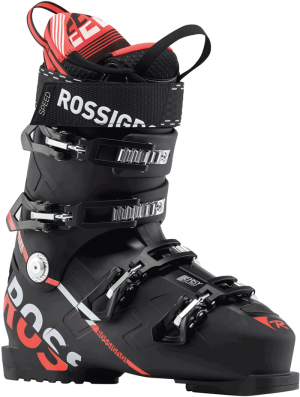
Wide feet? Do you prioritize comfort over performance? Rossignol’s Speed boots might be just what the foot doctor ordered. The 104mm last is about as wide as ski boots get.
(from $230; rossignol.com)
The Eighties Called
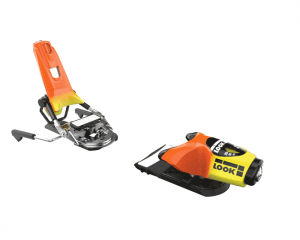
…and they want their bindings back. This winter several of the Look Pivot range of bindings will come in brash yellow and orange graphics. For anyone who remembers the Calgary Olympics, they’ll revive memories of Alberto Tomba and Sun Ice ski suits. Bring on the neon. (from $350; look-bindings.com)
The Alpine Boot Diet
No, it’s not a replacement for the Keto Diet, it’s the trend for resort-focused ski boots to follow their backcountry-bound brethren—with continuous weight loss. The Hawx Prime by Atomic, Head Nexo LYT and Dalbello Panterra are new high-performance ski boots whose biggest technology story is less weight. Most use a combination of variable shell thickness—thick where it’s needed, less where it’s not—and lighter plastic to shed grams. For instance, the Hawx Prime designers used shell thickness to ditch 10 per cent of the weight compared to last season’s version. And Head added graphene pellets to the plastic mix, shedding weight without impacting performance. A few less grams may not feel like much standing in line, but they add up over a day of moving boots back and forth across the fall line, especially if you throw in a few bootpack lines. (Hawx Prime, $699, atomic.com; Nexo, from $494, head.com; Panterra, $670, dalbello.it)
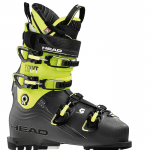
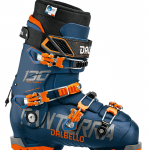
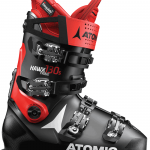
Any-Boot Binding
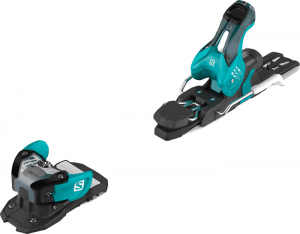
A growing group of bindings can handle any type of boot sole. But most of these are higher DIN rated, meaning lightweights, more intermediate skiers and the budget-conscious are left out. If that’s you, Salomon’s got your boots with the Warden 11, its lowest DIN multiple-sole-compatible binding. The toepiece still adjusts to fit alpine touring boots, Grip Walk soles or regular alpine DIN boots, but with a DIN range of 5 to 11. ($179; salomon.com)
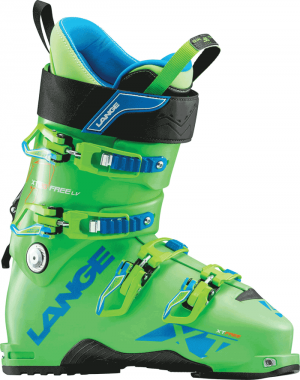
SEVEN BEATS TWO
Lange is bringing its Dual Core technology to its no-compromise freeride boot, the XT 130. Introduced last year, Dual Core is a way of mixing and combining two different densities of plastic in the boot shell. Where most companies inject plastic into a boot mould through two injection points, with Dual Core, Lange uses seven so it can precisely layer and position the different plastics to optimize power transfer, stiffness and soft spots throughout the boot. ($750; lange-boots.com)
FULL TILT INTO THE BACKCOUNTRY
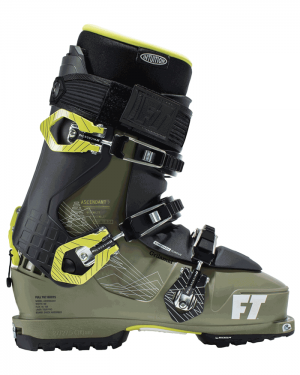
With its signature accordion bellow built into the shell’s tongue, Full Tilt boots are instantly recognizable in the lift line—and beginning this winter, will be in the backcountry as well. The new Ascendant is Full Tilt’s first touring-friendly boot. Beyond a mechanical walk mode on the heel (users choose either “Ascend It” or “Send It”) it looks and skis like Full Tilt’s popular Descendant boot from which it was designed. It comes with a mouldable Intuition Full Tilt signature overlap liner that replaces traditional lace-up technology with a quick, one-pull, spiral-tightening cord as well as a separate Velcro shin-strap. It comes with both standard alpine soles and Michelin rockered rubber touring soles. After testing the Ascendant for several days (and one of us most of the winter) Ski Canada was smiling big time; it skis like a high-performance downhill boot but is more comfortable than most. With a 120 flex, it’s stiff and powerful moving laterally, but the grooved tongue has a natural flex that always felt just right, whether bashing spring bumps at Whistler, carving firm snow at Mt. Washington or ascending and ripping some scary stuff in the Alps. At 26.5, it weighs somewhat mid-range at 1,860g and its 102 last will be welcoming for wider feet. For the backcountry, the Ascendant is equipped with pin tech binding inserts for compatibility with any touring binding. The outsole is grippy and lugged, ideal when we scrambled to the top of a couloir on rocks. The plastic tongue pulls off to make uphill slogs even lighter and less-restrictive, and a waterproof gaiter keeps snow out of the boot. ($750; fulltiltboots.com)
THE QUIVER-KILLER BINDING

“Pins are for climbing not charging,” or so says Chris McKearin, Salomon’s alpine commercial manager in the U.S. Skiing with pin-style touring bindings at the resort can feel a bit sketchy, but because they’re lightweight and simple, these bindings are ideal for ski touring, not aggressive laps on hardpack. That’s why the Shift binding from sister brands Atomic and Salomon is a revolution. At the resort you click in like you would a normal alpine binding, and with nearly the same security and power. When it’s time to tour, push a button on the toepiece and the binding transforms. From the DIN-shaped toe two pins appear, ready to grab tech binding inserts on the bill of a boot. Hooked in, the binding tours like a pin binding with full range of movement. The beauty of this system, the only one like it, is that you can ski a full alpine ski boot at the resort in a normal-feeling binding, but you still have the versatility of touring with one setup. It’s ideal for someone who wants to keep his or her options open but mostly just rides the lifts. There’s always a trade-off, and in the case of the Shift it’s weight. Compared to other touring bindings, the Shift is heavier. It weighs 865g. That’s 100g more than its nearest competitor, the Marker Kingpin. However, you can’t ski a DIN boot in the Kingpin. And it’s about half the weight of a traditional alpine binding. “With the Shift binding, you have all the power transmission to drive a big ski in a lightweight touring-capable package,” says McKearin, “finally solving the puzzle of efficient uphill capability with true alpine performance.” ($649; salomon.com or atomic.com)
THE TOUGHEST BINDING
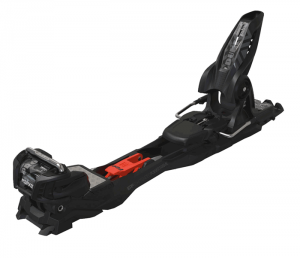
Wondering what’s keeping Ian McIntosh attached to his skis when he goes big in the middle of an Alaskan face? The answer this year is the Marker Duke Pro EPF 18 binding. With a DIN range of 8 to 18, this beast starts where most experts end and goes up from there. It’s made to take a licking. A metal bar reinforces the toepiece and doubles as a kick for getting snow off. Marker used magnesium parts rather than aluminum or steel because it’s stronger and lighter. The frame of the binding is 28 per cent wider than most for better power transmission. And there’s more: it’s touring capable, switching into uphill mode at the flick of a switch, and has Sole ID for adjusting to any boot style. At 2.7 kg you’ll never win an uphill race on it, but to play with the big boys it’s exactly the tool you want. ($520; marker.com)
GRIPWALK WINS THE BINDING WAR
First there was alpine binding standard, better known as DIN. Then AT or alpine touring boots came along, followed by Walk-to-Ride and in 2016 GripWalk. All were designed to make getting around out of skis easier, and each represented a subtle but important difference in the shape and dimensions of the bottom of a ski boot. Those little shape shifts created big headaches. Not all boot soles fit in all bindings, and understanding compatibility was akin to explaining blockchains. Thankfully, clarity is emerging. Last year bindings appeared with adjustable friction plates, the sliding piece under the toe in an alpine binding. A few cranks of a screwdriver adjusted the position to the boot sole. And now, one of the competing factions is dropping out. The brands that were using Walk-to-Ride boot soles—including Salomon, Atomic, Lange and Rossignol—are switching over to GripWalk. Murkiness will linger for a couple of winters as the transition settles in. The safest bet: check compatibility with a shop expert, compact shells are not like normal alpine boots. Retailers are still learning the specifics of different isonorms and skiers are still heading into the backcountry with new boots or bindings not intended for each other.
FROM BOAT TO BOOT
Punch them or mould them, plastic ski boot shells can be manipulated to fit better. But almost all plastic has a memory, so it tends to rebound back toward its original shape, at least a little. To reduce rebound in the hard-skiing S/Max ski boot, Salomon used polyurethane pellets from the boat-building industry. Further improvements in the plastic mix reduce the moulding time from 20 minutes to 10, with adjustments up to 6mm in diameter. That’s good news, because the last is a narrow 98mm. Available in a mix of flexes, the S/Max boot features a stiff frame around the foot and ankle that Salomon says transfers power more effectively, speeding the message from body to boot to ski. Anyone who likes to charge the piste will want to check out the S/Max. ($699; salomon.com)
FAMILY OF THREE
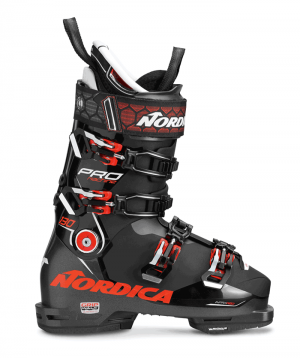
First there was the SpeedMachine. Then the SportMachine. To round out the range, this winter Nordica introduces the ProMachine. With a 98mm last and low-volume shell, the ProMachine is the highest-performance and most piste-focused boot of the three. There are four men’s and four women’s flex options and, in all but the softest boot, the shell and liner are heat mouldable. The liner, in particular, is loaded with comfort: Primaloft insulation, a wicking surface, and cork for feel and customization. The shell uses a mix of three plastics: softest over the foot to ease entry, stiffest down the spine and along the sides for energy transmission, and a third everywhere else for a mix of comfort and stiffness. And to really spoil yourself, opt for one of the two top-end models. They come with a GripWalk Sole for smoother walking, and a softer, lugged rubber sole by Michelin that grips ice and snow better. (from $500; nordica.com)



